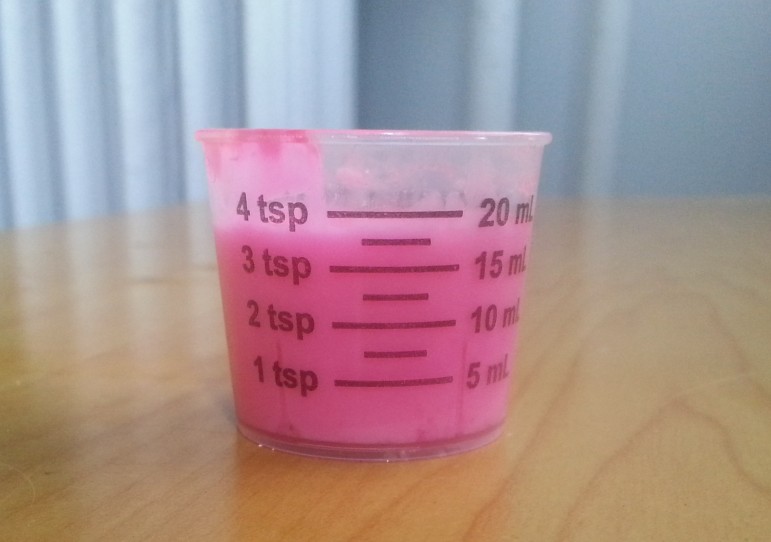
Jarrett Murphy
It's pink. It's yummy. And it can alert city scientists to potential water problems.
The city is keeping track of how often you get the runs.
In one of the more interesting programs associated with New York City’s elaborate drinking water supply system, the city created a surveillance program to monitor sales of anti-diarrheal drugs like Pepto Bismol or Imodium. Why? To track water contamination.
The program, which the city’s Department of Environmental Protection (DEP) created in 1995 following outbreaks that gained national attention in Georgia and Wisconsin, was built to track cryptosporidium (a.k.a “crypto”) and giardia. Those parasites cause the intestinal illnesses cryptosporidiosis and giardiasis. Symptoms include diarrhea, stomach cramps, nausea and vomiting. Both crypto and giardiasis can cause serious illness; high-risk patients are more susceptible and can die.

All this week, a joint City Limits-WNYC reporting partnership will broadcast and publish stories about New York City's incredible water system and the challenges it faces.
In 2002, the Department of Health and Mental Hygiene (DOHMH) started its own monitoring system and in 2012, the two programs were merged into a single effort controlled by DOHMH.
According to the DEP, crypto and giardia are transmitted by “eating contaminated food, drinking contaminated water, swallowing contaminated water while swimming or bathing, having contact with animal or human feces, and certain sexual practices.”
If either parasite ever got into the city’s drinking water supply, the DEP would want to know about it immediately. So, every single day, two major pharmacy chains provide the DOHMH with data on sales of over-the-counter anti-diarrhea medication. This sales data, combined with information obtained from emergency room visit logs, eight “sentinel” nursing homes and stool specimens at a clinical lab, is monitored so any unusual spikes are noticed. A bump in sales of anti-diarrheal medication does not necessarily signal an outbreak, but it is one of a few ways the city can get a quick jump on any problem.
In 2014, the DOHMH reported 864 cases of giardiasis and 102 cases of crypto. Those numbers are down considerably from the early 90s: in 1995 there were 2,484 reported cases of giardiasis and 471 cases of crypto. The highest percentage of cases is in Manhattan; 73 of the giardiasis cases were in a single neighborhood, Chelsea-Clinton. A DOHMH spokesman wrote in an e-mail that this is because rates of giardiasis “are generally higher among men who have sex with men (MSM), and this neighborhood has a higher concentration of MSM than many in the city.”
To date, the city has never had an outbreak of giardiasis or crypto, something a DOHMH spokesman said was due to the DEP’s efforts to protect the water.
A DOHMH spokesperson would not say what two chains are currently part of the program, only that about 345 individual locations provide the sales data.
The spokesman also said that the Department of Health is actively seeking more pharmacies to provide data.
“We are negotiating with remaining large chains now to increase membership in system,” wrote spokesman Levi Sharpe in an e-mail.
The monitoring system is comprehensive. The DEP and DOHMH create an annual report to track reported cases across every neighborhood in the city. The data from ER visits, nursing homes, and over-the-counter drug sales — dubbed its “Syndromic Surveillance Systems” — are also charted so any upticks, or “signals” can be noticed.
Sometimes spikes in reported cases have don’t mean more people are getting sick, just that more folks are going to the doctor to get diagnosed because waterborne illnesses are in the news.
On a chart in its annual report, there was a major spike in crypto cases in August 2005, about which the Department of Health writes: “The increase of cryptosporidiosis cases reported in August 2005 is suspected to be due to a surveillance bias caused by publicity around an outbreak in upstate NY related to recreational water exposure at a spray park.”
To read more about the program or look at some of the data, every “Waterborne Disease Risk Assessment Program” annual report going back to 1997 is online here.









